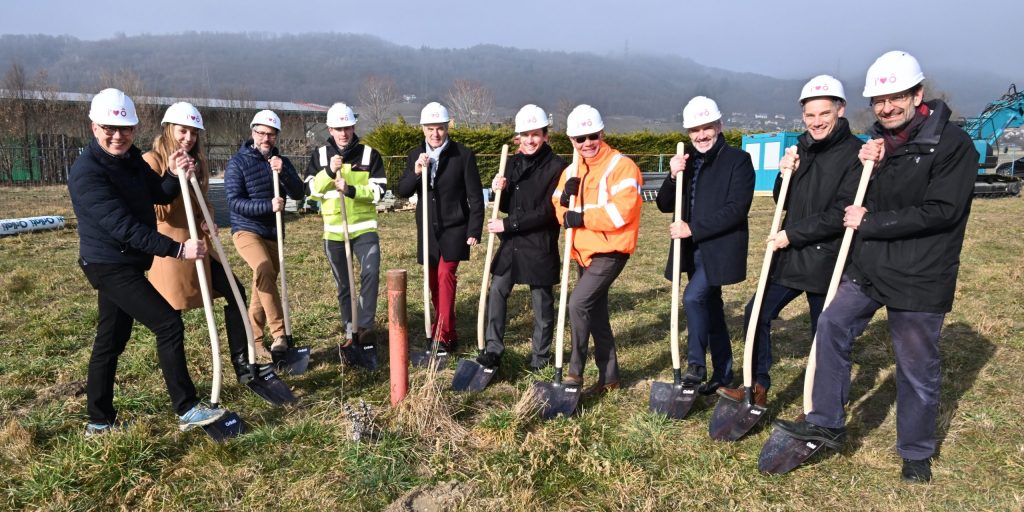Drilling pad being prepared for geothermal project near Lausanne, Switzerland

A geothermal heating project breaks ground with construction of the drill pad near the city of Nyon in the canton of Vaud in Switzerland.
An important step has been taken for the EnergeO geothermal project near Lausanne, Switzerland. On January 27, 2022 partners and local authorities joined the EnergeO Management Committee to kick off construction work on the drilling platform on the Vinzel site. Site project site is located at Lac Leman (Lake of Geneva) between the cities of Geneva and Lausanne. Lasting four months, the work will precede the drilling planned for the start of the 3rd quarter of 2022.
The project started a seismic campaign in August/ September 2021, as we reported. The plan for the project is provide geothermal heating to many households and businesses in the region, but also eventually produce electricity. The Eikenott eco-district, located in Gland, will be the first site to benefit from this 100% renewable energy from the region. The project is driven by Romandie Energie, SEFA, SEIC, and SINyon.
The kick off illustrates in a tangible way a crucial stage: the exploration of the basement of La Cote. The construction of the drilling platform, as well as the ancillary zones necessary for the operations, should be completed by June 2022. The teams in place will then carry out the drilling, on the model of a geothermal doublet, either a well dedicated to production and a second dedicated to the reinjection of water from the natural faults of the region. The two medium-depth boreholes will be around 2,300 meters in order to reach the Dogger aquifer, a geological layer dating back approximately 175 million years.
The realization, during the drilling, of geological and hydrogeological tests in the aquifer will come to close this phase of exploration, which, in the event of positive conclusions, will give way to the final stage: the exploitation of the natural heat of the under -ground. The use of this indigenous and sustainable energy is planned for a minimum of 40 years, which will supply the district heating networks of the equivalent of 1,500 households in the region and will lead to reductions in significant CO2 emissions, around 4,000 to 5,000 tonnes per year.
Details about the project can be found here.
Source: Energeo